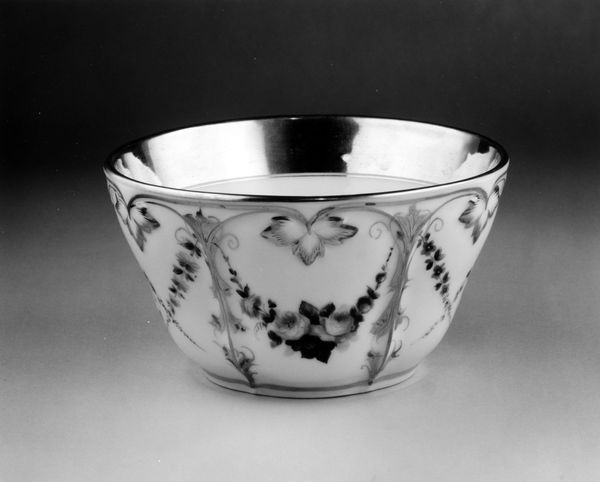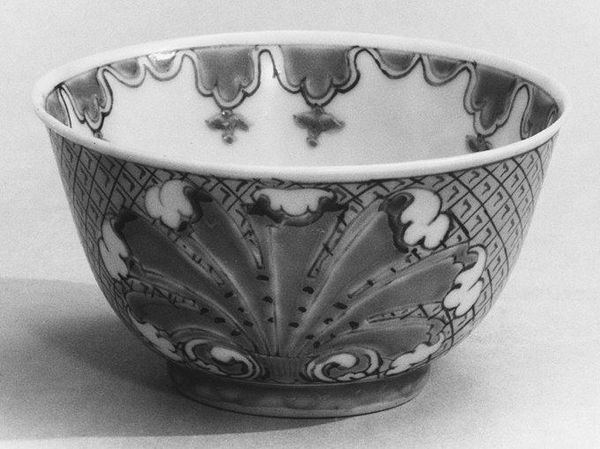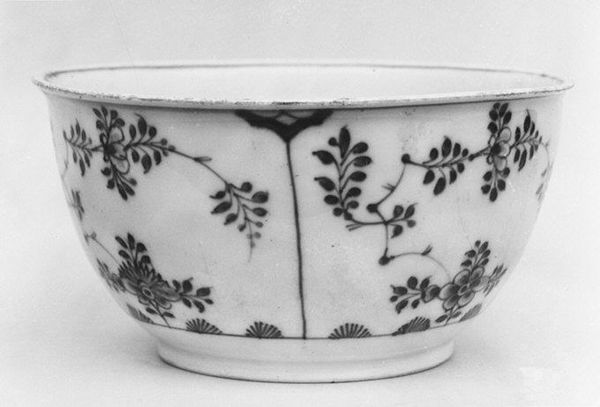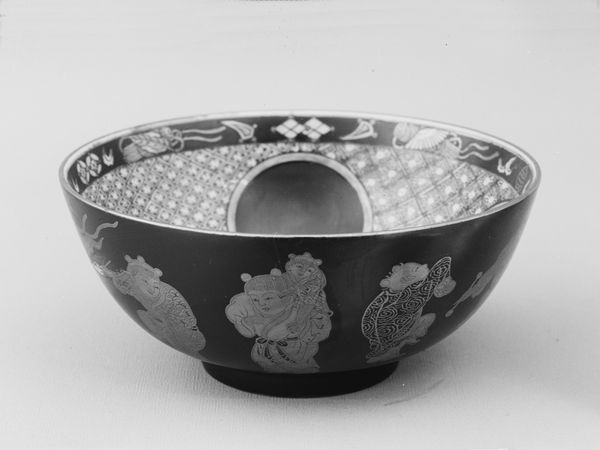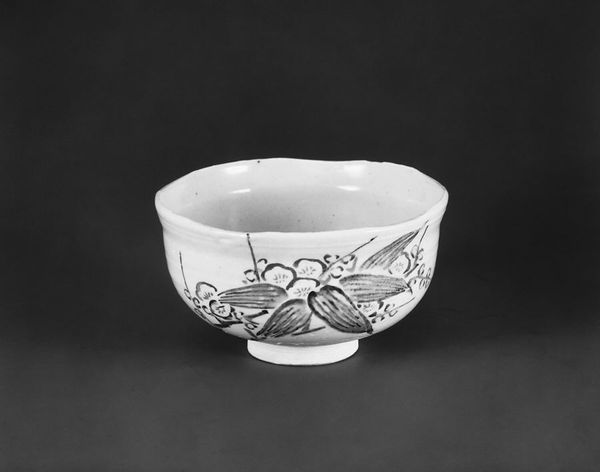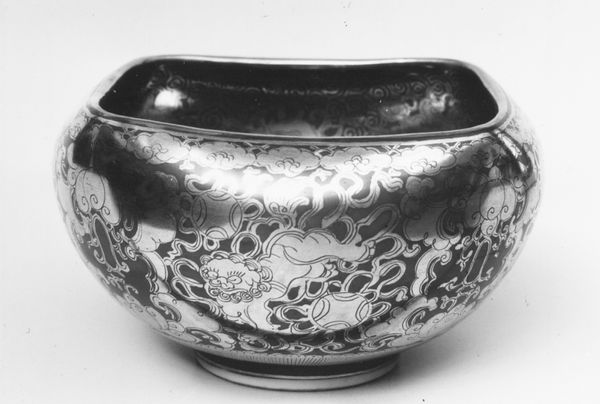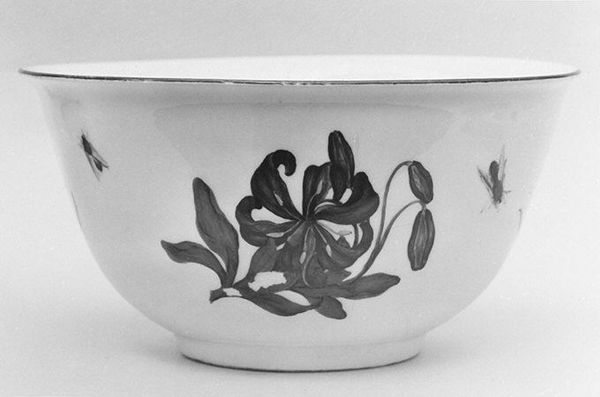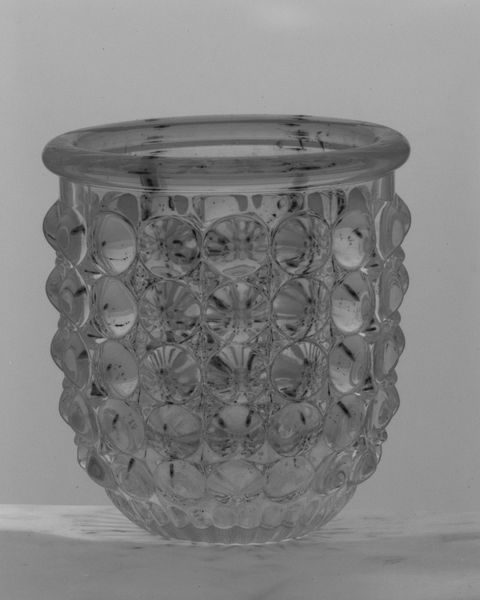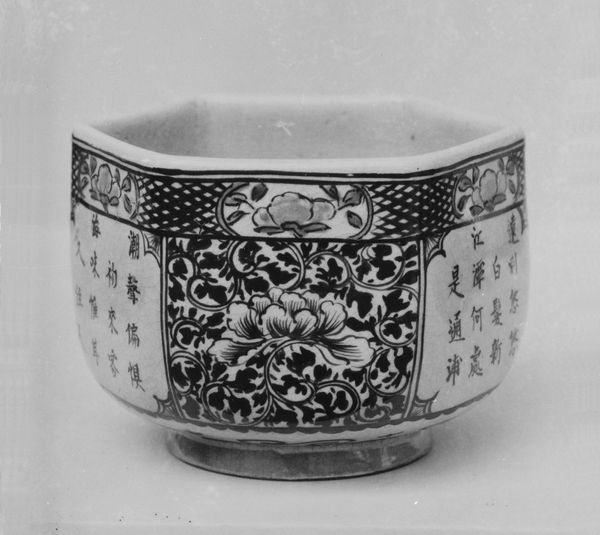
ceramic, sculpture
#
art-nouveau
#
ceramic
#
stoneware
#
geometric
#
sculpture
#
orientalism
#
decorative-art
Dimensions: Height: 2 in. (5.1 cm); Diameter: 2 1/2 in. (6.4 cm)
Copyright: Public Domain
Curator: This captivating "Bowl," a stoneware sculpture created in 1903 by Fernand Thesmar, now resides here at the Metropolitan Museum of Art. What's your initial reaction to this piece? Editor: It strikes me as restrained yet decorative. The bowl form itself is simple, but the floral design, the material choices – it feels rich and intricate but very formal. Curator: Indeed, Thesmar was a key figure in the Art Nouveau movement, which consciously embraced decorative arts, elevating them from craft to high art. This bowl exemplifies that sensibility. Also, elements from Orientalism are clear here in its execution. Editor: Absolutely. And you can feel the dialogue it establishes. How does this object interact with ideas about function, labor, and aesthetic value? Bowls are traditionally seen as domestic objects, but this one seems to transcend everyday use. It asks us to contemplate art’s place within the domestic space and its interaction with feminine roles during that time. Curator: A critical lens reveals much, especially in light of industrialization's effect on artisans at the turn of the century. Mass production posed a great challenge for traditional crafts, as did questions of art world distribution, and you find craftspeople consciously engaging with it, creating objects that could be both exhibited and actually consumed and handled, breaking down established power dynamics. Editor: Right, there's an assertion of artistic control against industrial standards. By invoking floral motifs with its delicate curvature and stylized shapes, and through ceramic craftsmanship itself, Thesmar acknowledges his material roots while claiming access to this modern high-art identity. Also, consider the implied role of a white European consumer during that era. Who would be in such a possession of this type of bowl, which integrates aesthetics borrowed from East Asia. It forces the viewer to consider questions of the cultural politics around collection, display and trade. Curator: Considering its stoneware medium, and in spite of the Orientalism, the design does seem very integrated within larger currents of production that privilege aesthetic experimentation over purely function. Editor: Which adds to its complexities! Ultimately, it demonstrates Art Nouveau's engagement with not just nature, but culture, class and questions about power and representation. Curator: Thank you for that perspective. It truly broadens our appreciation of this beautifully crafted object. Editor: My pleasure. Hopefully, it enriches listeners understanding of its historical moment too.
Comments
No comments
Be the first to comment and join the conversation on the ultimate creative platform.
